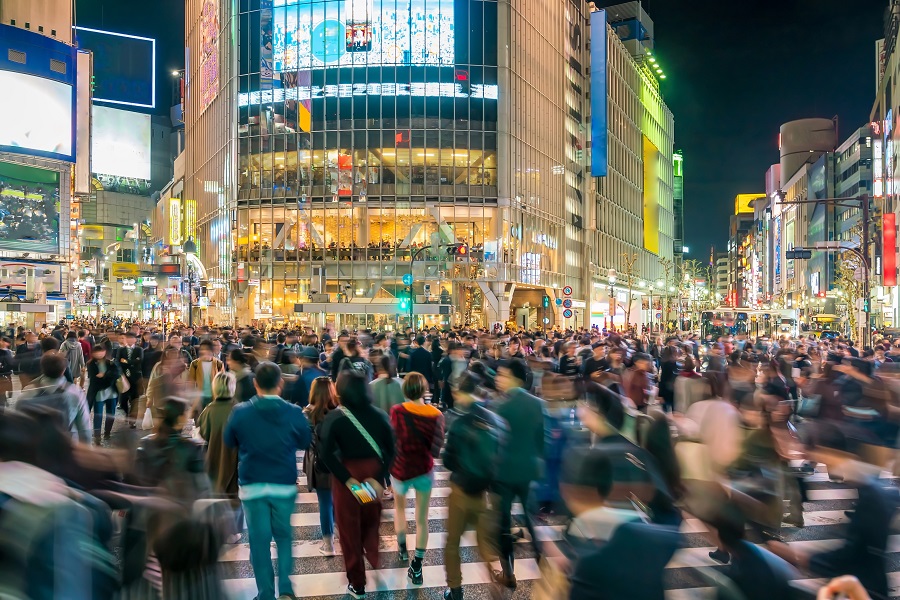“The Fourth Industrial Revolution will mean different things to different people, but there's one undeniable truth: It will transform migrant workforces everywhere.”
Migration in the business world has evolved into a complex, global exchange of human power and intellect among nations with distinct cultures and workforce needs. This ongoing balancing of human capital with economic needs continues to impact the geopolitics of the world.
However, digital transformation and the Fourth Industrial Revolution are changing the role and value of migrant workforces in profound ways.
From Muscles to Motherboards
Machines and computers are increasingly able to perform jobs once held by low-skilled migrant workforces — with greater efficiency and lower costs, too. This worldwide development poses unprecedented challenges for migrant workers, nations and the global economy, as automation and tech continue to replace human labor in various industries, such as farming, automotives and manufacturing.
A potential surge in unemployed workers with diminished earning prospects has many countries worried about widespread economic strife and political chaos. What, exactly, will the world look like when automation in the Fourth Industrial Revolution replaces the livelihoods of the 258 million international migrants who make a living by traveling to destinations that offer unskilled unemployment?1
The Promise of the Unknown
Like previous industrial revolutions, the Fourth Industrial Revolution will mean different things to different people. Digital transformation has made it easy to access almost any information via the Internet, and it's given entire populations — especially migrant workers — new opportunities to receive an education and learn new skills, trades and professions. Countries once hindered by poverty and economic isolation are embracing these new opportunities. For example, India, which has a population of 1.3 billion, expects its digital transformation market to reach $710 billion by 2024.2
For migrant workers, upskilling and professional development is critical to job security. Many countries and governments have recognized the need to provide their citizens with the skills and knowledge needed to compete in the age of automation — and that starts with workers having access to these technologies to edify their value and marketability in a competitive world.
However, in countries like Argentina, Brazil and the U.S., people feel strongly that their fates are up to themselves instead of their governments and that they are individually responsible for handling the sweeping changes of digital transformation.3 For some, this means migrating to nations and economies that offer better prospects than their current circumstances.
A World of Evolving Needs
As witnessed throughout history, migrant workers are drawn to regions where suitable jobs are available. In a world defined by automation and computer technologies, a new era of needs has emerged.
In developed countries, such as Japan, South Korea, Spain, and the U.S., birth rates are declining at an extraordinary rate.4 Of particular concern in South Korea and Japan is societal aging, where the number of elderly people is increasing dramatically, while birth rates are declining — there's a lack of younger people who can care for the aging population and generate much-needed taxes through employment to fund retirement for older populations.
Japan and South Korea are employing robots and automation to tend to the psychological, emotional and physical needs of elderly citizens, but these technologies are unable to provide the financial resources and domestic services these nations need to continue operating. Japan's Prime Minister, Shinzo Abe, has introduced extensive reforms, often referred to "Abenomics," which proposes to loosen long-held cultural constraints by integrating more women into the workplace at every level of influence. However, the most controversial aspect of Abenomics is the intention to open Japan up to migrant workers to alleviate internal workforce deficiencies that require uniquely human capacities — a move which many Japanese citizens consider to be a threat to their cultural identity.5
But without younger workers to stabilize the economy, Japan might not have a choice. The Fourth Industrial Revolution is changing the game, and many countries will need migrant workers to fill the gaps between the evolving roles of man and machine.
For centuries, migrants have worked hard to fulfill their personal needs — which, in turn, also serves the needs of the employing countries that require their labor. In this modern economic landscape, automation and tech may force change upon job functions, but the need for human capital endures.
Sources:
1. "International Migration Report," United Nations, 2017, https://www.un.org/en/development/desa/population/migration/publications/migrationreport/docs/MigrationReport2017_Highlights.pdf。/
2."India Digital Transformation Market to Reach $710 Billion by 2024: P&S Intelligence", Prescient & Strategic Intelligence, 5 de março de 2019. https://www.globenewswire.com/news-release/2019/03/05/1747720/0/en/India-Digital-Transformation-Market-to-Reach-710-Billion-by-2024-P-S-Intelligence.html。
3. Wike, Richard and Stokes, Bruce, "In Advanced and Emerging Economies Alike, Worries About Job Automation," Pew Research Center, September 13, 2018, https://www.pewglobal.org/2018/09/13/in-advanced-and-emerging-economies-alike-worries-about-job-automation/。
4. Kotecki, Peter, "10 Countries at Risk of Becoming Demographic Time Bombs," Business Insider, August 8, 2018, https://www.businessinsider.com/10-countries-at-risk-of-becoming-demographic-time-bombs-2018-8。
5. Yoshida, Reiji, "Success of 'Abenomics' hinges on immigration policy," https://www.japantimes.co.jp/news/2014/05/18/national/success-abenomics-hinges-immigration-policy/#.XJr1GK2ZOgR。











